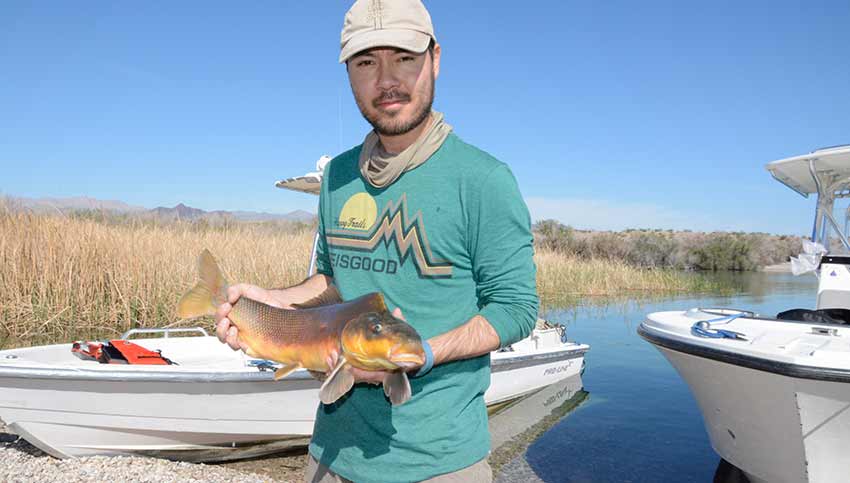
An NPS employee holds a razorback sucker for research before it is released. Imagine a scientist that needs to find, observe and count a specific species of study animals – but this species is extremely rare, lives underwater and is often on the move. This challenging scenario is the tough reality for the biologists that study razorback suckers in lakes Mead and Mohave. However, when it comes to saving this slippery species, scientists have figured out some clever tricks. 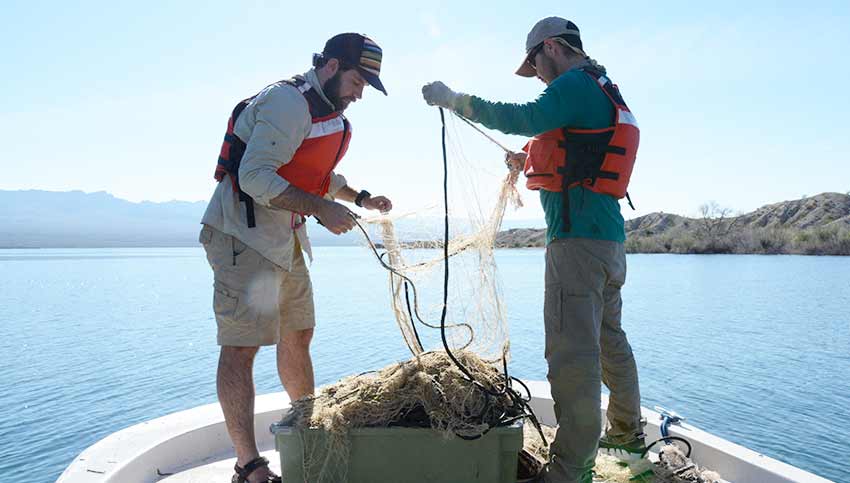
NPS employees reel in the nets placed the night before. Each year between January and April, biologists go out after dark and use underwater lights and dip nets to collect thousands of newly hatched razorback suckers from Lake Mohave. These tiny creatures are transported to the Willow Beach National Fish Hatchery where they can grow without risking the gauntlet of predators in the lakes that like to snack on fish eggs and hatchlings. Once they’re large and mature enough to leave this safe haven, many of these razorback suckers are transported into small ponds around Lake Mohave where they learn how to thrive in a more natural environment. 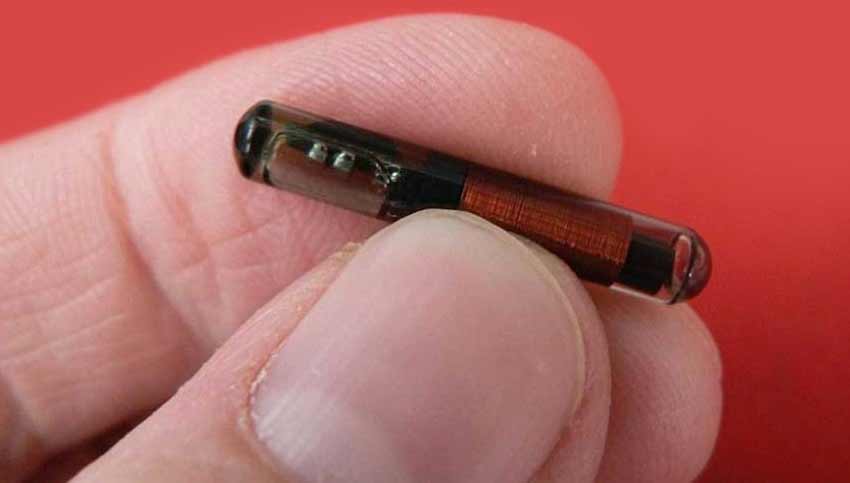
PIT tags are used to track razorback suckers. They are embedded under the skin and identify the fish each time it is caught or when the tag is remotely scanned. Finally, the razorback suckers are released back into Lake Mohave, but not without a new accessory called a Passive Integrated Transponder (or “PIT tag”). These tags are tiny - about the size of a grain of rice - but they are quite useful. Each tag is programmed with an individual code that can be used to identify the fish for the rest of its life, acting as a miniature ID tag. Any time the fish is re-caught, biologists can scan its tag to find out where it was reared, when and where it was released, and more. Scientists can even collect this data without re-capturing the fish; remote scanners set up in different parts of the lakes and throughout the Lower Colorado River can simply scan razorback suckers’ tags as they swim by, giving biologists huge amounts of information without having to catch or handle the fish at all. Biologists use PIT tags to find out information like:
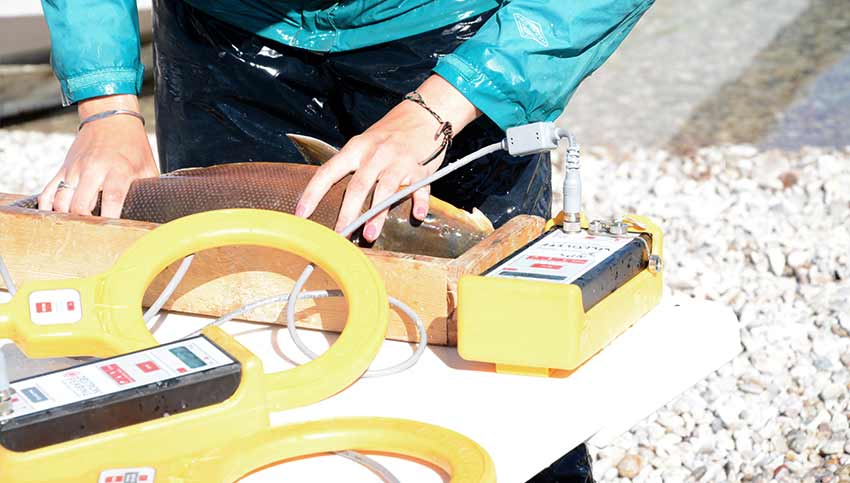
An NPS fishery biologist scans for PIT tags during the annual razorback roundup. Although capturing young razorback suckers and rearing them in hatcheries helps them survive, it’s not a perfect strategy. Fish raised in captivity don’t get the same life experiences that those growing up in the wild do; for instance, since they’ve never seen predators before, they might not realize that they should avoid these big, dangerous fish. Scientists are helping them make this connection by releasing fear hormones known as alarm pheromones, into the water at the same time they show the captive razorback suckers a predatory fish. That way, these fish learn not to make a costly mistake when they’re released into the lakes. Researchers are also experimenting with fish “bodybuilding” – when razorback suckers are raised in enclosures with constant water current, the fish end up stronger and faster since they must constantly swim against the flow. The researchers are hoping that these super-fit fish will have a survival advantage when they’re released into the wild. 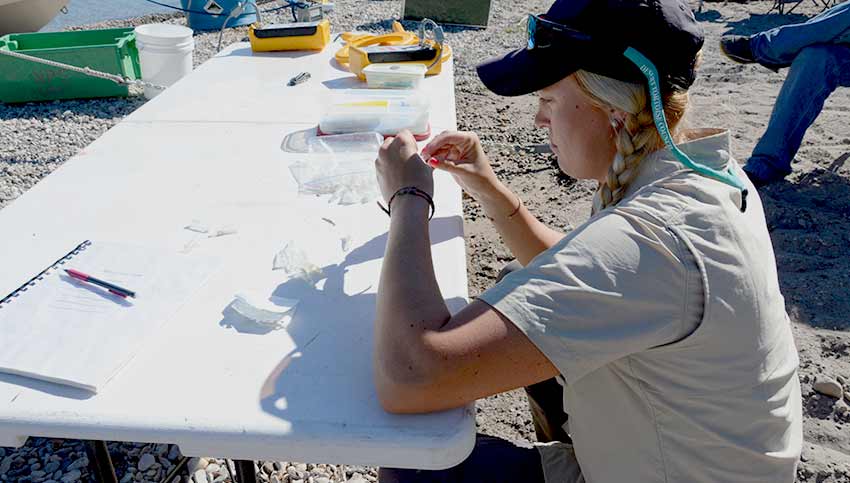
An NPS fishery biologist takes razorback fin samples for genetic testing. Studying and saving native fish may seem like a trying job, but having the opportunity to see razorback suckers live long and healthy lives - and watching populations grow over time - is incredibly rewarding, no matter how tough it is. Learn More
|
Last updated: April 4, 2017
